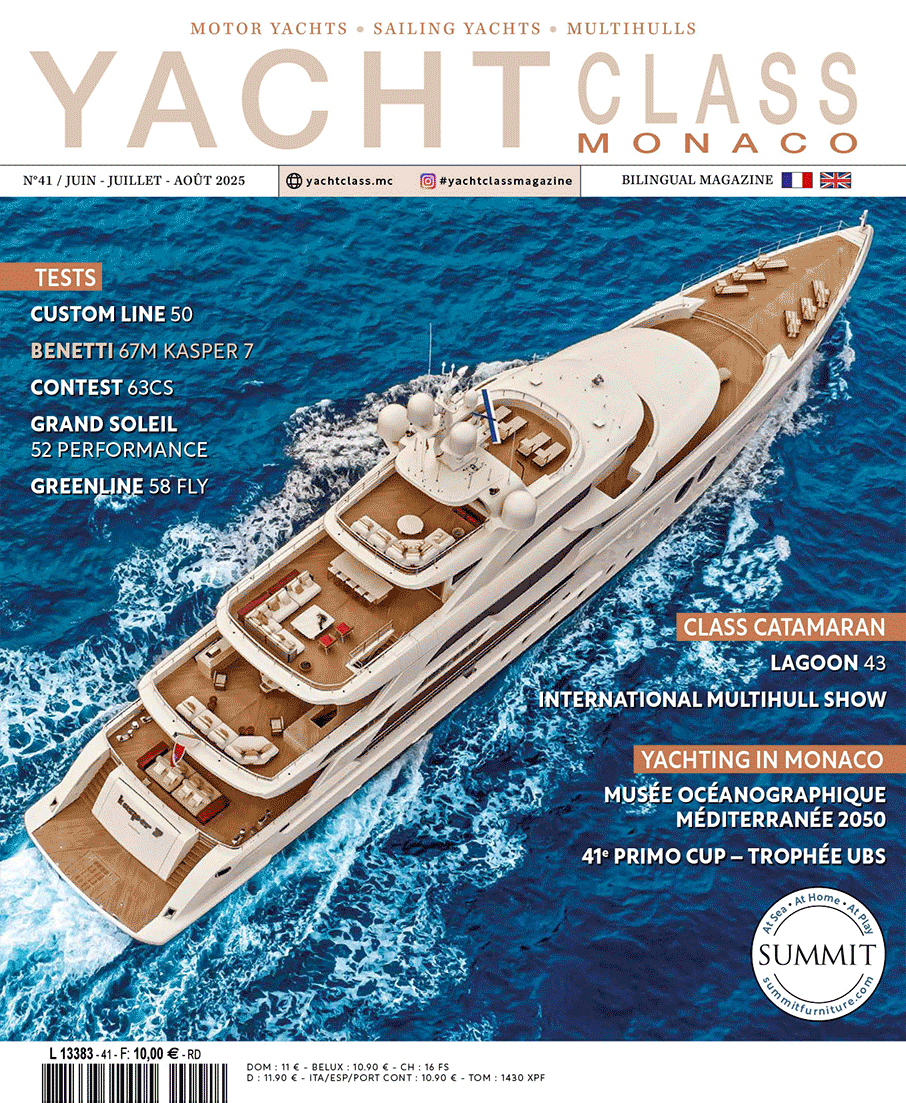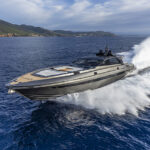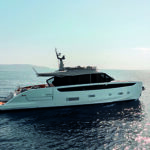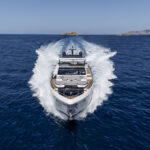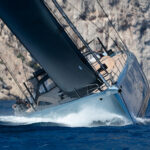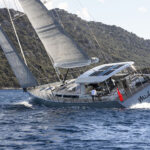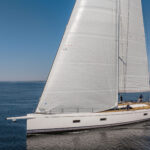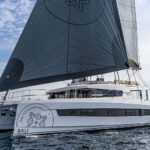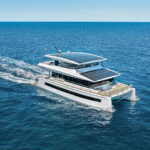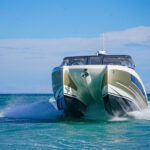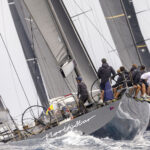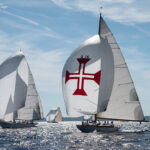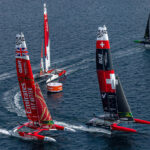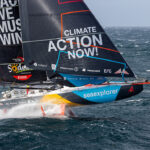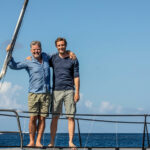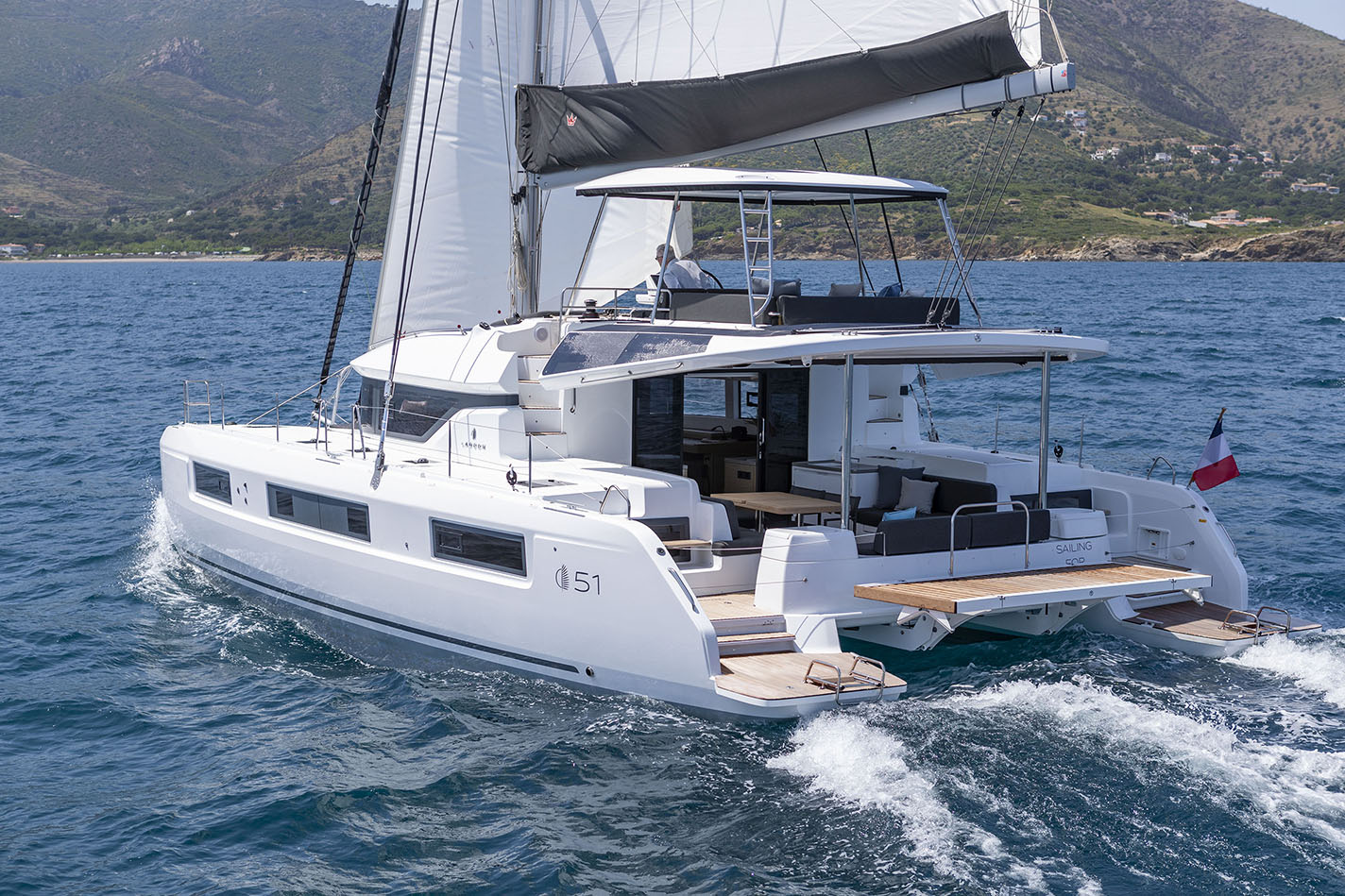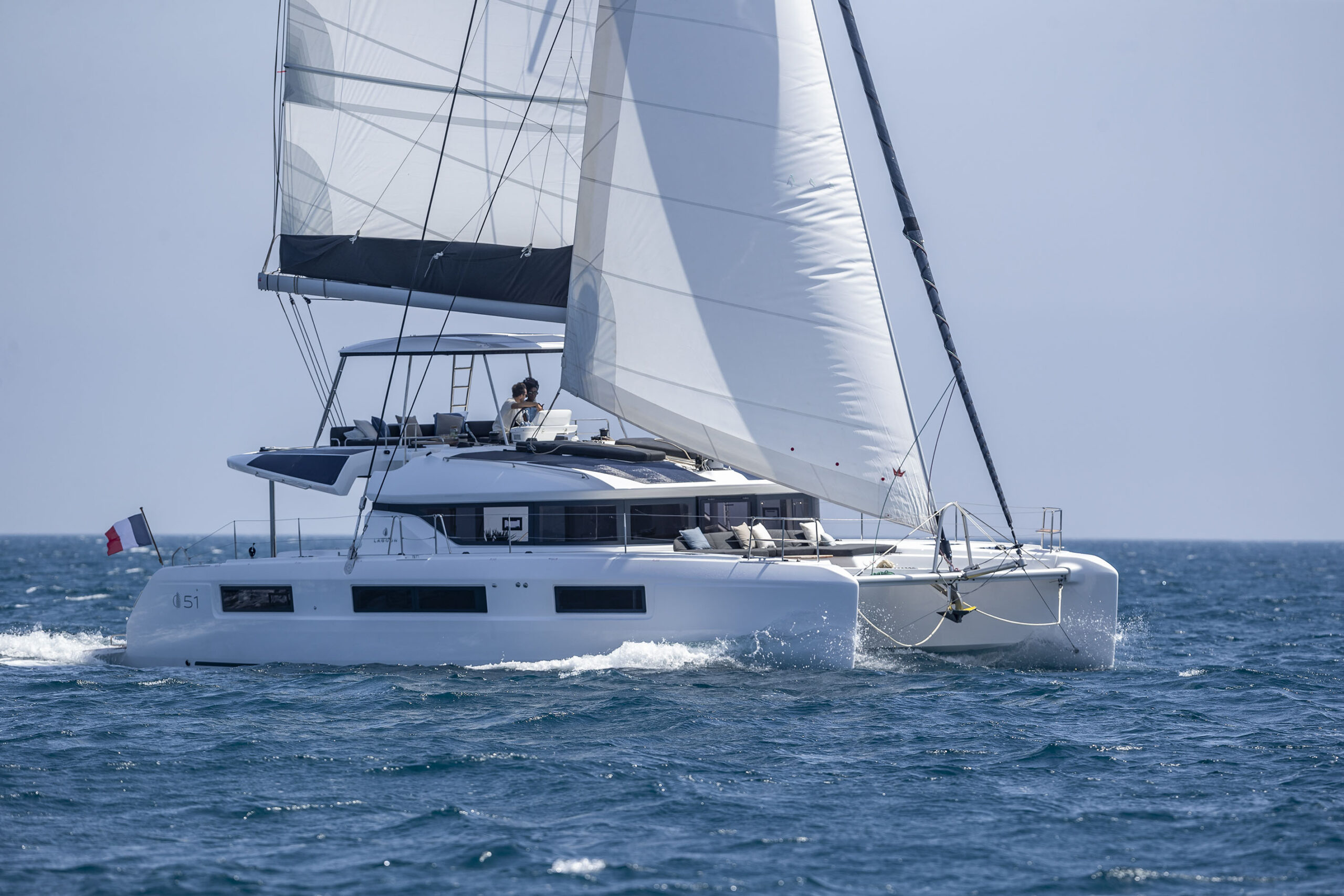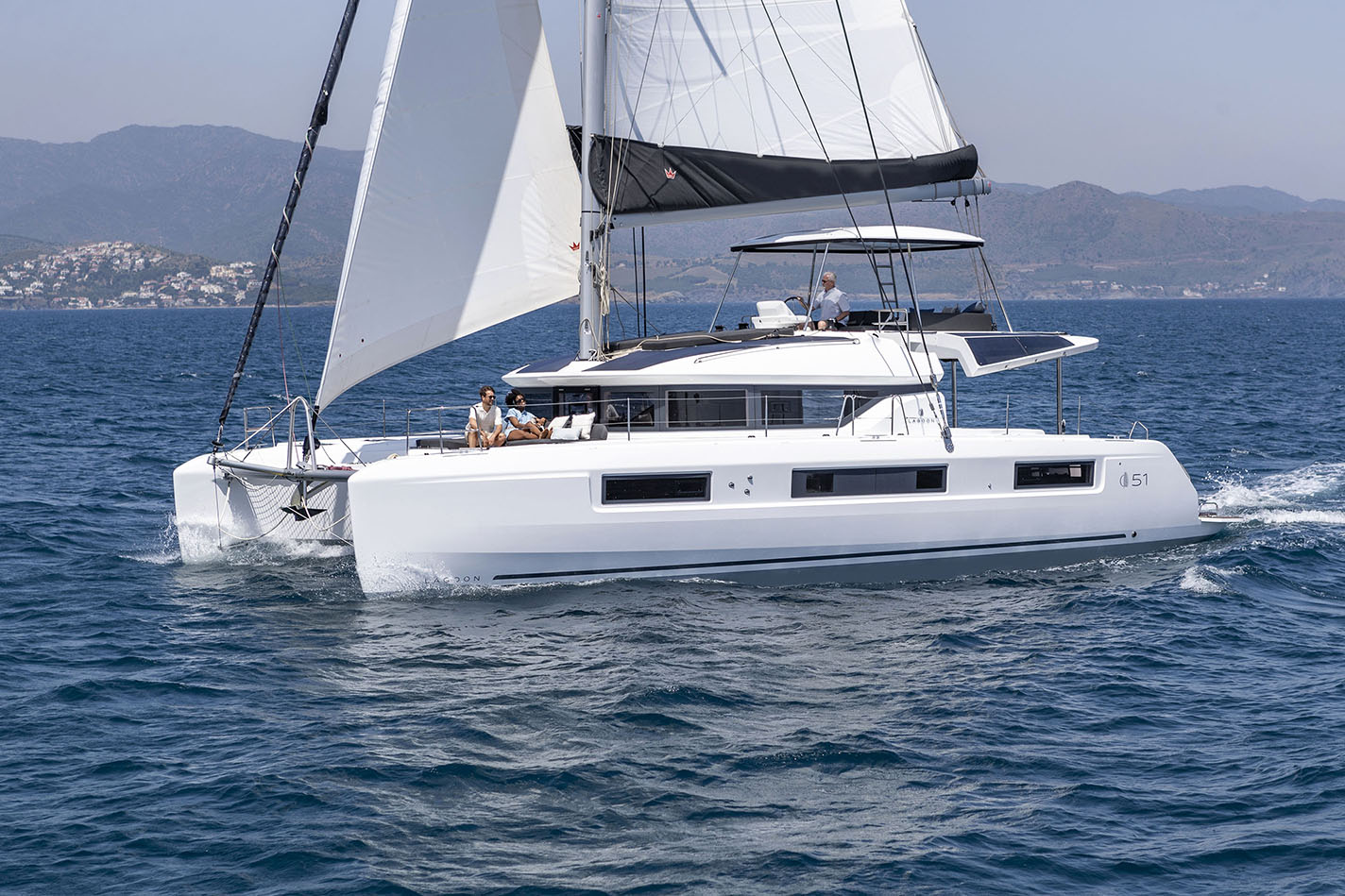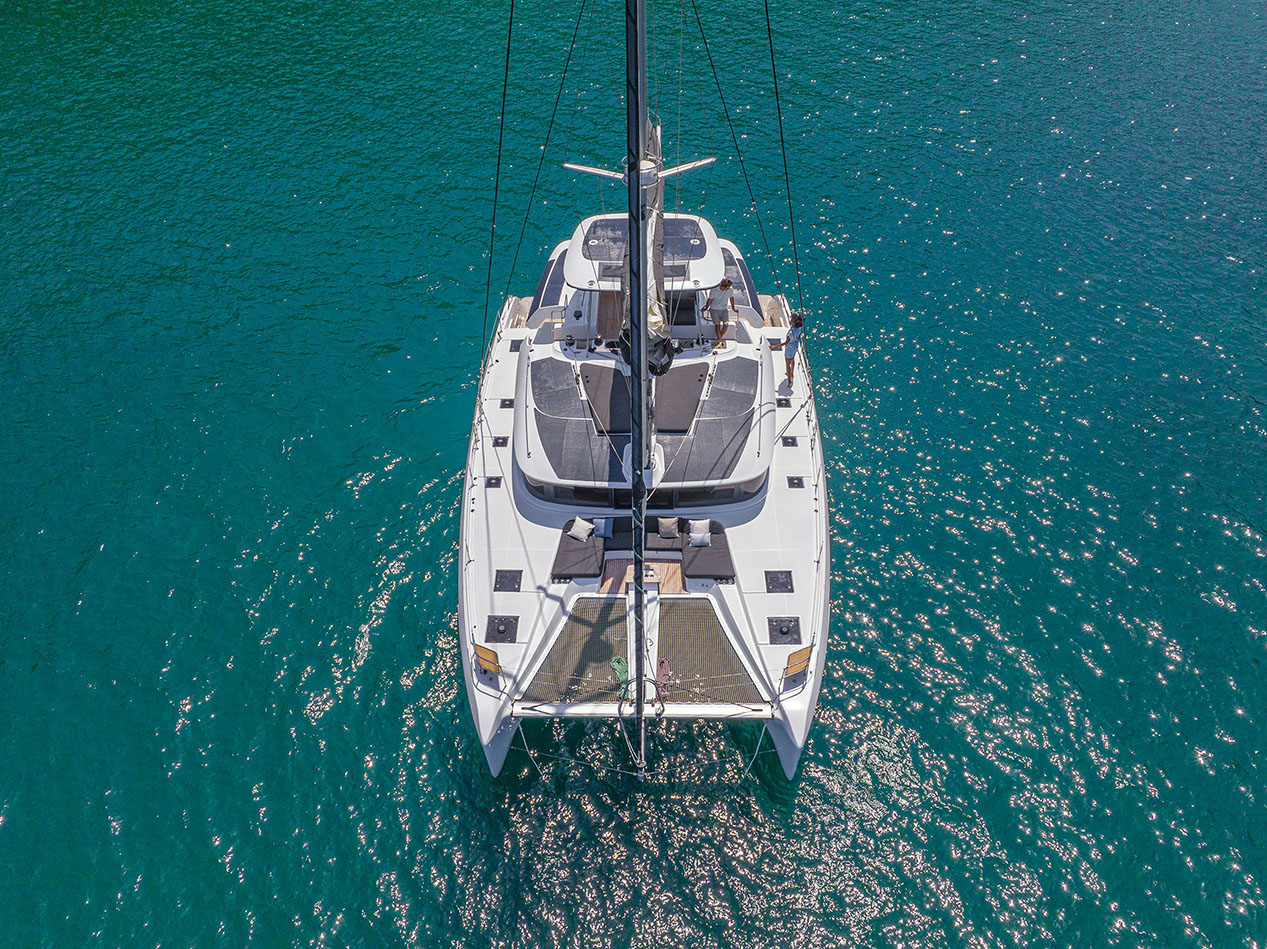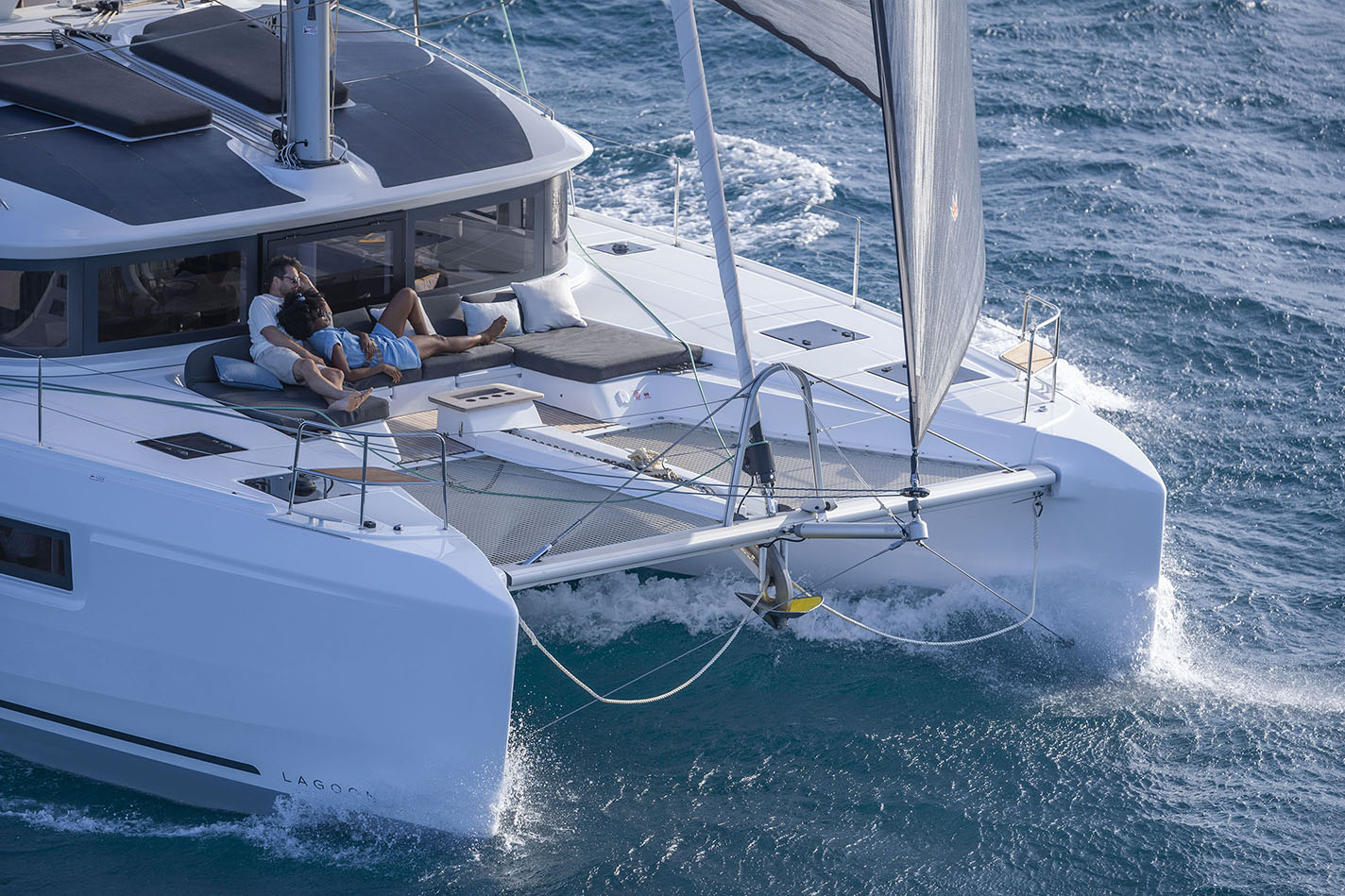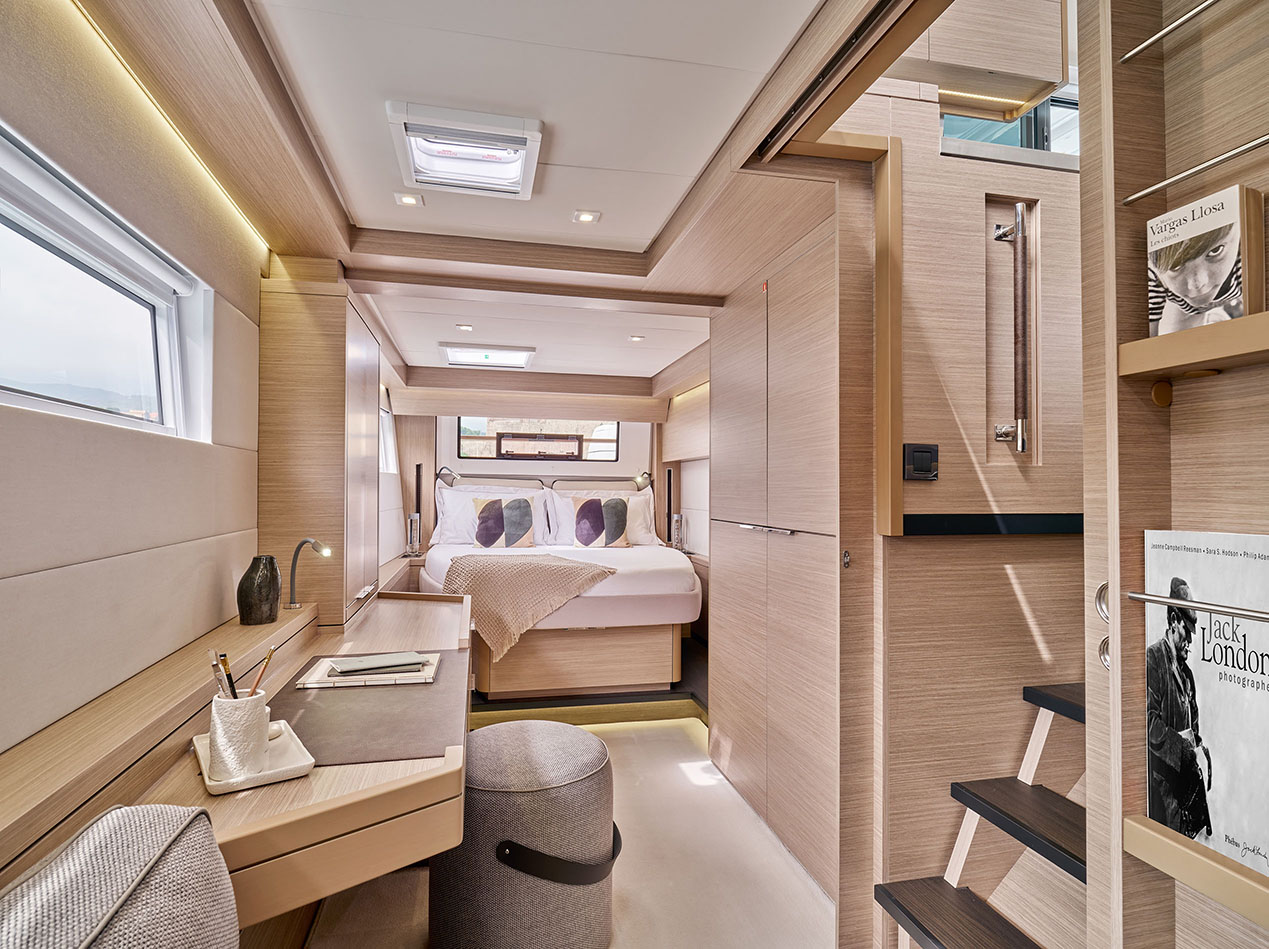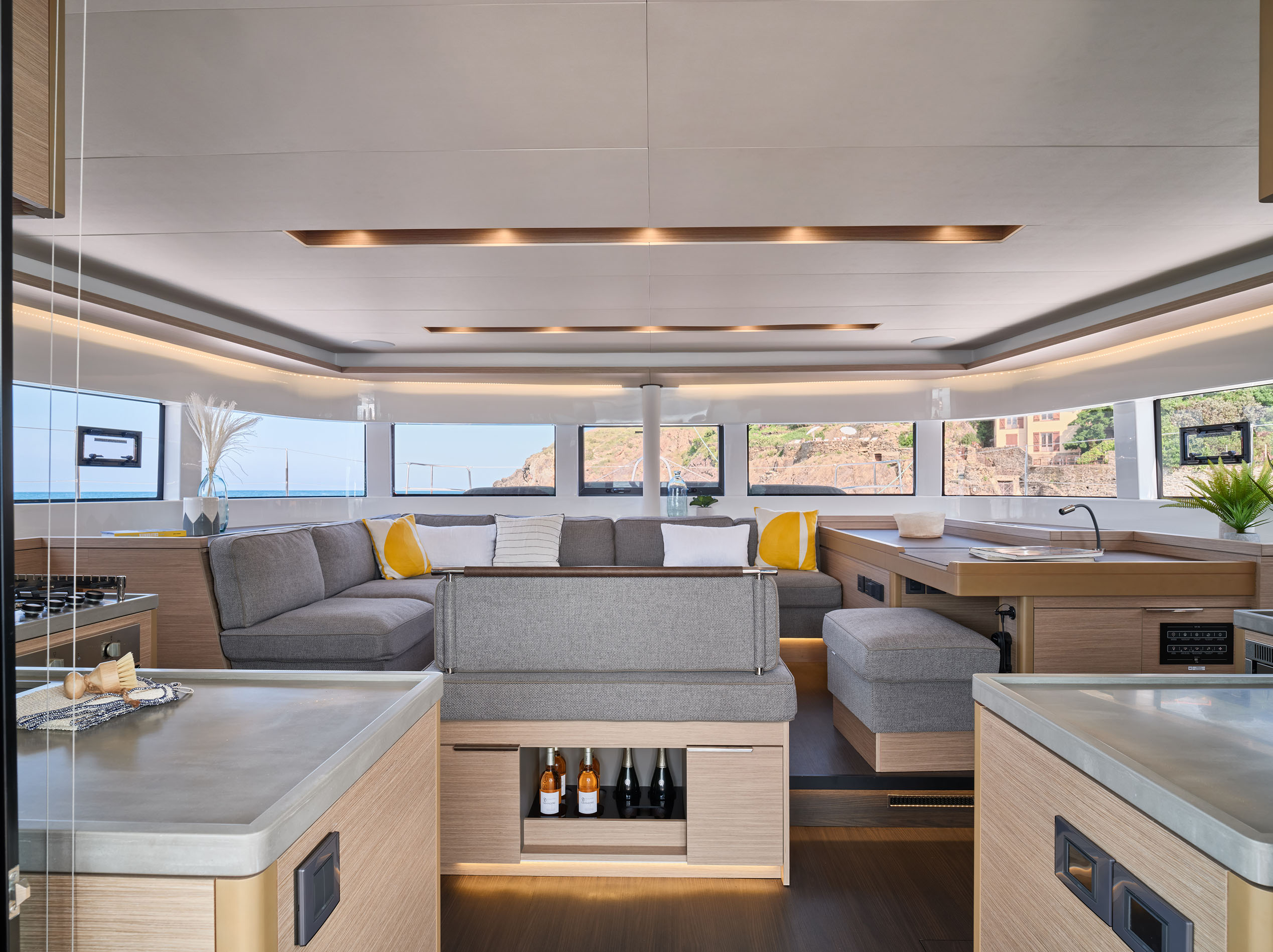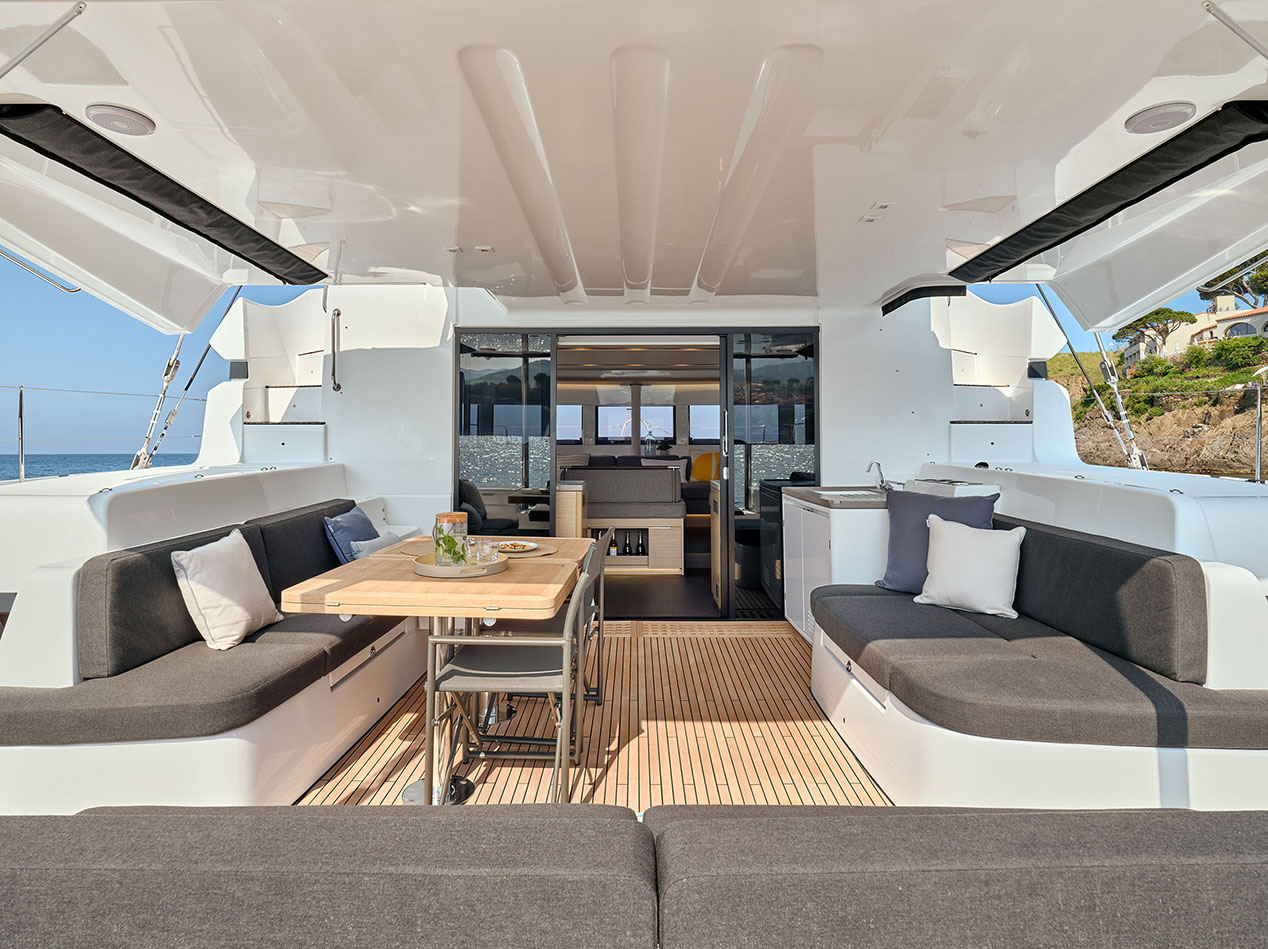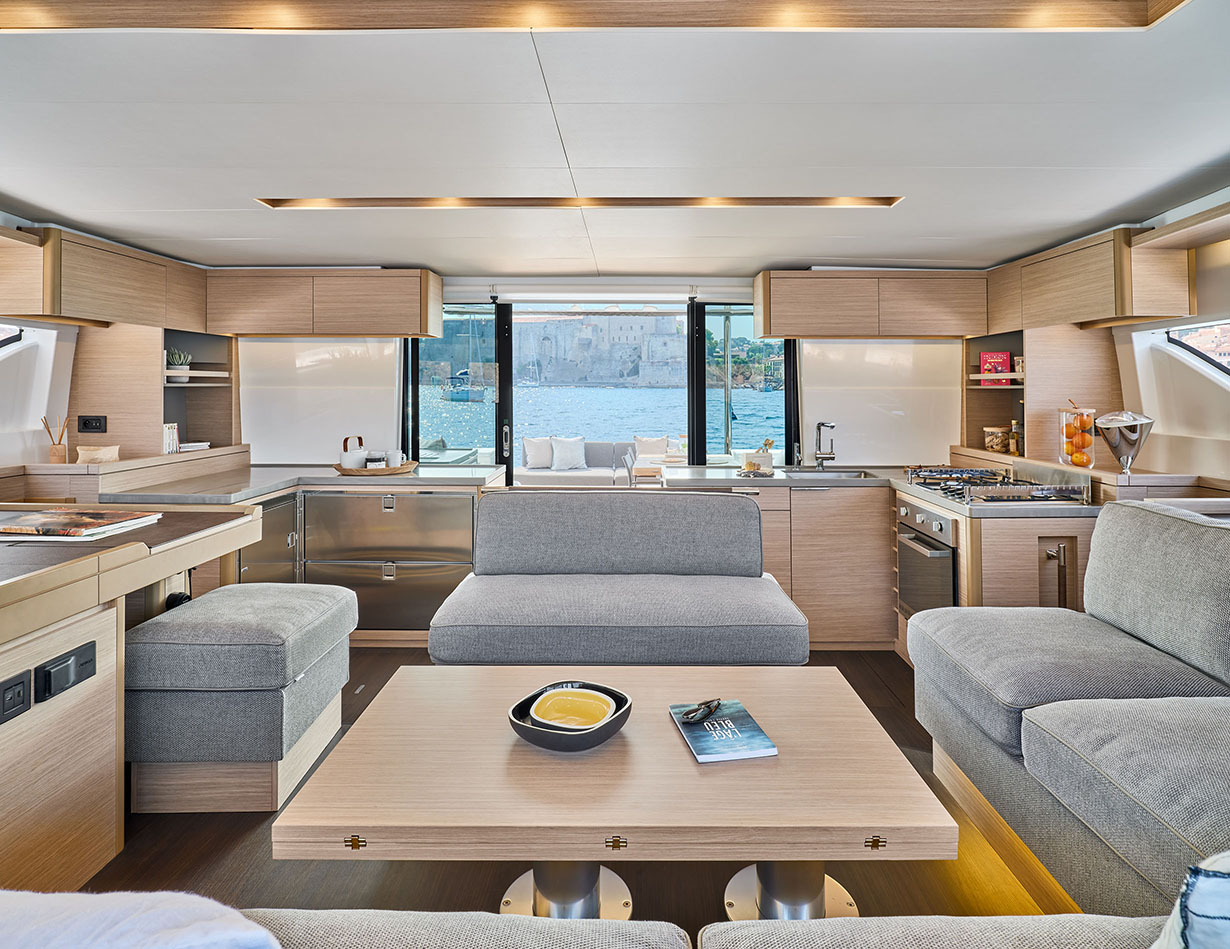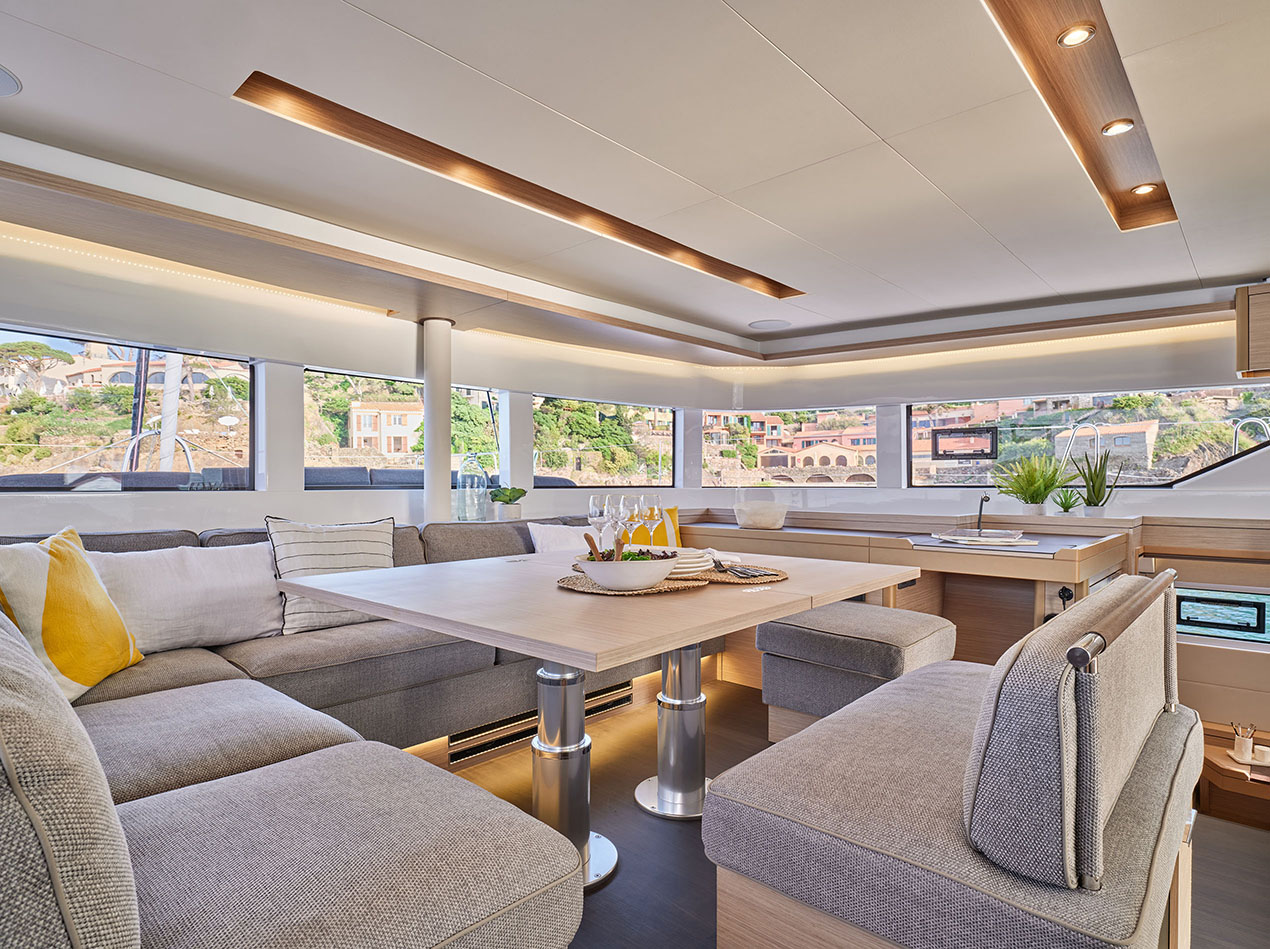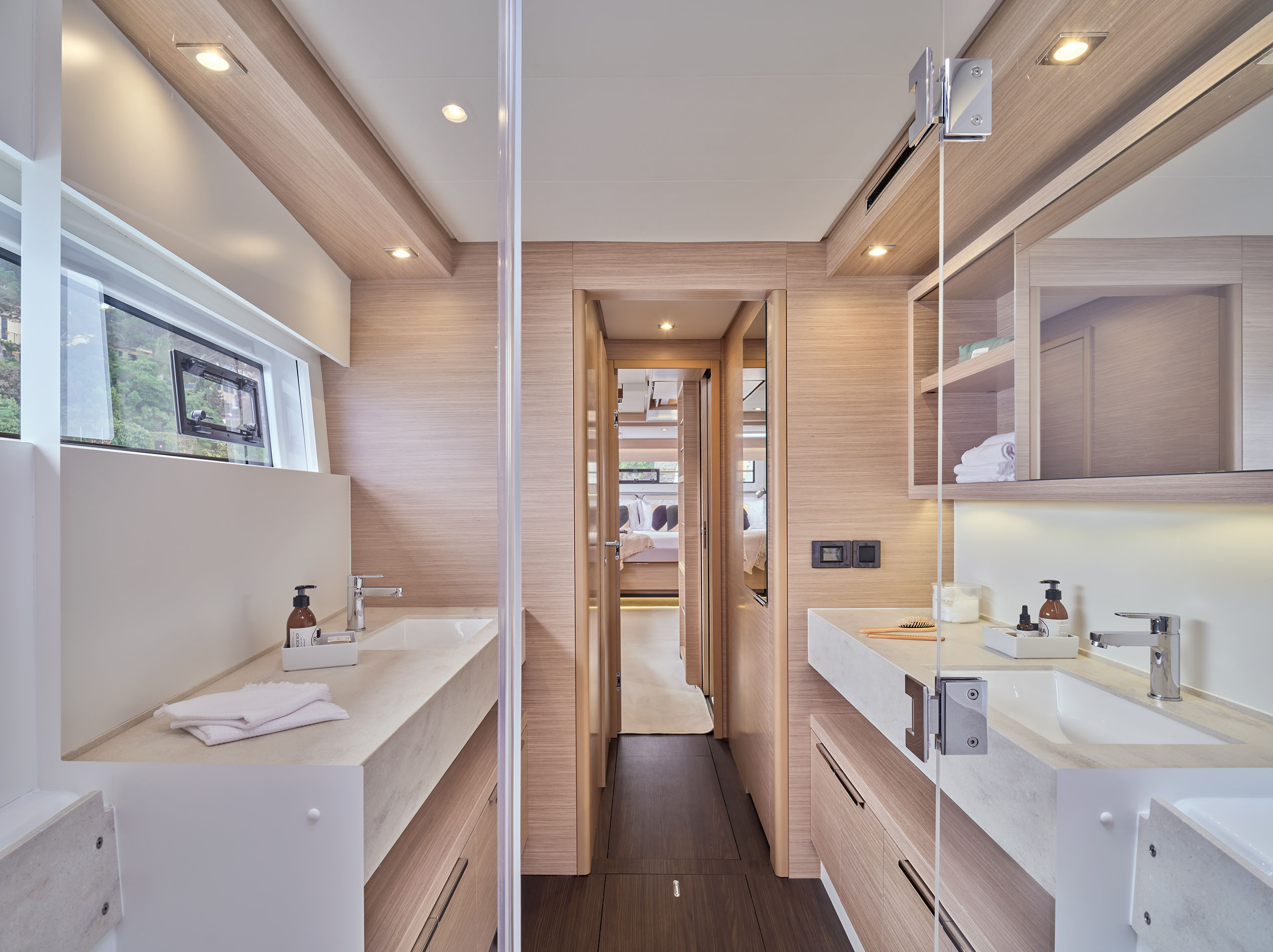Presentation
Yacht Class n°32 (mars-avril-mai 2023)
The Lagoon 51 is a milestone in the evolution of Beneteau Group’s historic catamaran range. Thanks to a long period of testing and the increasing use of environmentally friendly techniques, this yacht has many attractions. In addition, this owner’s version is pleasant to sail, seaworthy and offers a convincing level of equipment.
Written by : Christophe Varène – Photos : Gilles Martin-Raget – Lagoon
For some years now, Beneteau Group has had a test facility for the press and its privileged customers at Port Ginesta, a few kilometres south of Barcelona. Early last summer, after her world premiere in La Grande-Motte, the Lagoon 51 made a stop over there and was available for a sea trial. The conditions were mild, perhaps even too mild, to appreciate the temperament of this catamaran, directly inspired by its predecessor, the highly successful Lagoon 50. The breeze remained moderate, slightly over 5 knots, which of course facilitated the port manoeuvres, also well helped by the two 80 hp Yanmar diesel engines. In this respect, it should be noted that the standard engine configuration is more powerful than that of the previous model, which is a real advantage in terms of safety and navigation without sails, even if this does not reflect the eco-responsibility approach initiated by the shipyard.
An eco-responsible commitment
Let’s briefly review this environmental approach. The shipyard has rethought its production processes to obtain several certifications confirming its commitment. ISO 9001, one of the oldest standards, codifies and constantly monitors quality in the successive production stages. ISO 14001 validates the environmental impact measured, controlled and improved, with a particular focus on the reduction of raw materials. Finally, ISO 50001 aims to significantly decrease the energy consumption. These major efforts are completed by the use of natural fibres, generally hemp fibre, to replace fibreglass for various parts such as covers, bio-resin (important research is also being carried out within Beneteau group using the Elium resin developed by Arkema), FSC-certified wood (for responsible forest management) and recycled fabrics for upholstery. The increasing number of solar panels and the forthcoming use of electric propulsion (the Seanapps application will make it possible to directly manage the energy flows) reflect this determination, which can only be encouraged.
8.5 knots at cruising speed
As the wind is by nature a clean energy, we stopped the engines that had been propelling us at a cruising speed of 7.5 knots for 2 200 rpm (a lower speed should give her a range of almost 800 miles). We hoisted the gaff headed mainsail, an option that only increases the sail area by 3 m2, but in height for a better profile and more power. With an overlapping genoa, the whole is attractive. And it must be said that the Lagoon 51 performs well in light airs: between 5 and 7 knots of wind, the boat moves at the same speed. The regular delivery crew assured us that she has a cruising speed of around 8.5 knots, 10 in optimal conditions, and that 16 knots (!) were reached during a surfing session. She has a very efficient design, created by VPLP, with fine hulls as the volumes are only developped above the waterline. The flybridge’s helm station, with a central steering wheel, offers good visibility. All the halyards and sheets are led to this strategic point, where are also located four electric winches. At unbridled speeds, the Code 0, on a furler on the bowsprit, brings its power… a somewhat excessive word given the light wind we had. Thanks to the rather ergonomic flybridge station, the boat’s settings can be managed by one person. The only challenge will be during hoisting or lowering the mainsail when action is required on the very high boom.
Welcoming outdoors
As our trip neared its end, we decided to take a look at the facilities. At times, one might think that this or that element might need some work, but Thomas Gailly, Lagoon’s brand manager since 2020, reassured us by explaining the evaluation method already applied to the Lagoon 55. This first hull of the Lagoon 51 went through a long period of testing from the time it was launched until the start of production. Thanks to her presence at boat shows, the feedbacks from dealers and customers but also from the crews who conveyed her from Bordeaux to the Mediterranean for her maiden voyage, all the aspects that were commented (positively or negatively) were taken into accounts and improved when necessary and/or possible before the production launch. But to be honest, with the expertise built up by the brand since 1987, there will be very few changes. Let’s start with the exteriors. Boarding is facilitated by the wide platforms, despite their swim ladder, and the two low steps. Between the hulls, an optional hydraulic bathing platform can accommodate a 250 kg tender. The transom can be fitted with an optional adjustable plancha, while the cockpit, well sheltered by the flybridge, has a kitchenette with sink, worktop and refrigerator. Bench seats, large table and loungers makes it a privileged meeting place. But it is not the only one. There is also the foredeck with its small nacelle perfect for relaxation, both at sea and at anchor: its meridian seats and coffee table are very appealing. The same goes for the flybridge saloon, with double access and a rigid bimini, where U-shaped settees frame a table. Forward of this dinette, two sunpads are also available, surrounded by solar panels with a total capacity of over 3000 Wp. Now it’s time for a tour of the interior of this Lagoon 51.
A hull for the owner
We entered the saloon through two sliding windows that we wished were wider to give more continuity between inside and out. However, the windows all around, including opening ones, ensure an unobstructed view. The galley is fitted on both sides: the sink, hob and oven to port, and the worktop, fridges and storage to starboard. Forward is a height-adjustable table surrounded by three settees, while the starboard corner has a desk/chart table (with optional dashboard). On the model tested, the starboard hull was entirely dedicated to the master suite. The result is superb: a sleeping area with double berth, desk and storage space, an amidships dressing room and sofa, then a separate toilet and a large bathroom with two basins and an XXL shower cubicle. The other hull houses three cabins: an aft en suite VIP and two doubles, one forward and the other amidships, with a shared head. A configuration with two or three double cabins in each hull is also available. The Lagoon 51’s excellent sailing qualities, beautiful exterior finishes and quality design are a clear indication of her ambition.

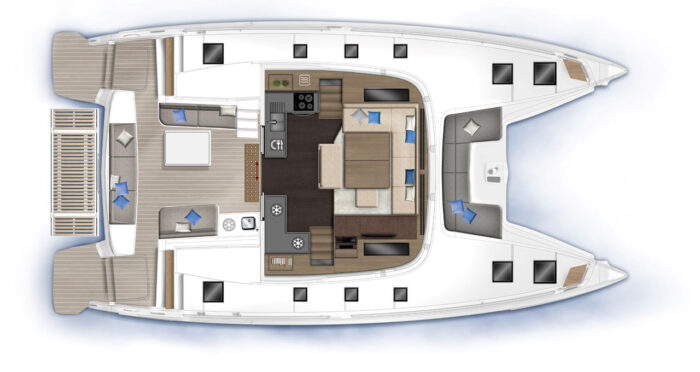
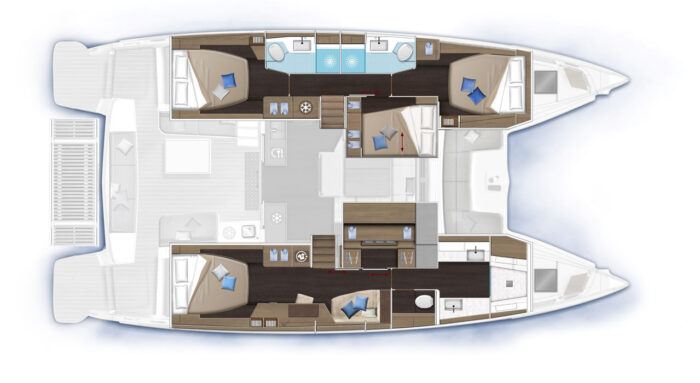
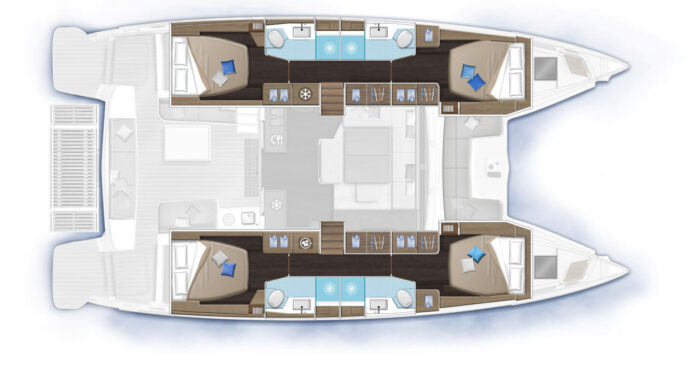
Technical sheet
